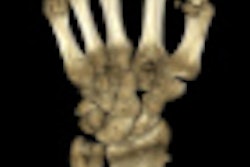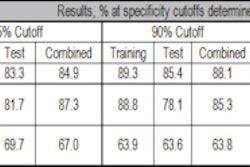Researchers from the Mayo Clinic in Rochester, MN, developed a novel tool that permits automatic adaptation of kV as a function of patient size and diagnostic task, as well as attenuation levels on the CT scout image in abdominal and thoracic imaging.
Lifeng Yu, PhD, and colleagues performed two experimental studies, one using four thoracic phantoms and the other using seven abdominal phantoms, all packed with iodine samples to measure contrast-to-noise ratio. The goal was to assess the achievable radiation doses and examine workflow patterns.
For the four thoracic phantoms, the optimal kVs were 80, 80, 100, and 100, with corresponding relative doses of 37.6%, 44.4%, 60.8%, and 89.5%, compared to standard 120-kV imaging. For the seven thoracic phantoms, the most dose-efficient kV settings ranged from 80 to 140 kV, with corresponding radiation doses relative to 120-kV scans of the same phantom at 57.8% to 100%. Depending on patient size, optimal kV settings suggest dose reductions of up to 62.4%, Yu said.



















